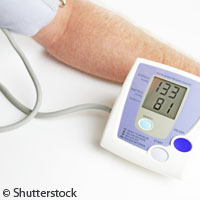Four blood pressure changes in a lifetime
Changes in blood pressure occur during four phases in a person's lifetime, new research led by the Medical Research Council Unit for Lifelong Health and Ageing, University College London suggests. Presented in the journal PLoS Medicine, the research was funded in part by the Member States participating in NEW OSH ERA ('New and emerging risks in occupational safety and health [OSH] - anticipating and dealing with change in the workplace through coordination of OSH risk research') project. Researchers recognise that it is possible to regulate the primary causes of increases in blood pressure, helping prevent cardiovascular disease and stroke. And while many people with blood pressure report no symptoms, around 33 % of the adult populations in the United Kingdom and the United States suffer from this condition. So keeping blood pressure at normal rates is important for a person's well-being. In this latest study, the scientists used data from a number of British studies that measured people's blood pressure repeatedly taken over time. They discovered that blood pressure changed over four phases throughout life: a quick increase during adolescent growth; a gentler increase in early adulthood; a midlife rate increase (usually in the 40s); and slow increase and reversal of blood pressure in late adulthood. 'Much of our understanding of the age-related progression of systolic blood pressure (SBP) comes from crosssectional data, which do not directly capture within-individual change,' the authors of the study write. 'We estimated life course trajectories of SBP using longitudinal data from seven population-based cohorts and one predominantly white collar occupational cohort, each from the United Kingdom and with data covering different but overlapping age periods.' Evaluating the blood pressure measurements of 30 372 individuals that comprise 102 580 SBP observations spanning between 7 and 80+ years old, the researchers assessed the differences between the measurements in the studies done in the general population and in the occupation group. Their findings suggest that the occupational group reported lower average blood pressure compared to the general population, and midlife blood pressure acceleration emerged later. According to the researchers, diet and lifestyle help modify blood pressure levels. Social and economic circumstances also affect these levels. The team found that women who reach the beginning of adulthood had lower blood pressure than men, but this rate later increased at midlife, triggered most likely by menopause-related effects on salt sensitivity. So men and women had similar average blood pressures later in life. 'The deceleration and decline in old age was less evident after excluding individuals who had taken antihypertensive medication,' the authors write. 'Compared to the population-based cohorts, the occupational cohort had a lower mean SBP, a shallower annual increase in midlife, and a later midlife acceleration. The maximum sex difference was found at age 26 (+8.2 millimetres mercury [mm Hg], higher in men, 95 % CI: 6.7 9.8); women then experienced steeper rises and caught up by the seventh decade.' The researchers also note a strong link between body mass index and blood pressure throughout life. 'Whilst our study is unable to identify the key determinants of age-related increases in [blood pressure], further research should try to understand which factors affect this trajectory and when in the life course such factors exhibit most influence,' the authors conclude. Researchers from the Universities of Bristol, Cambridge, Southampton and Glasgow contributed to this study. Led by the Finnish Institute of Occupational Health, the NEW OSH ERA consortium consisted of ministries and funding agencies from Belgium, Denmark, Germany, Greece, Spain, France, Italy, Hungary, the Netherlands, Poland, Finland, Sweden and the United Kingdom and clinched a EUR 2.6 million grant under the EU's Sixth Framework Programme (FP6) to help the networking of the participating countries to coordinate national public funding on this topic.For more information, please visit:University College London:http://www.ucl.ac.uk/PLoS Medicine:http://www.plosmedicine.org/home.action
Countries
Finland, United Kingdom, United States



